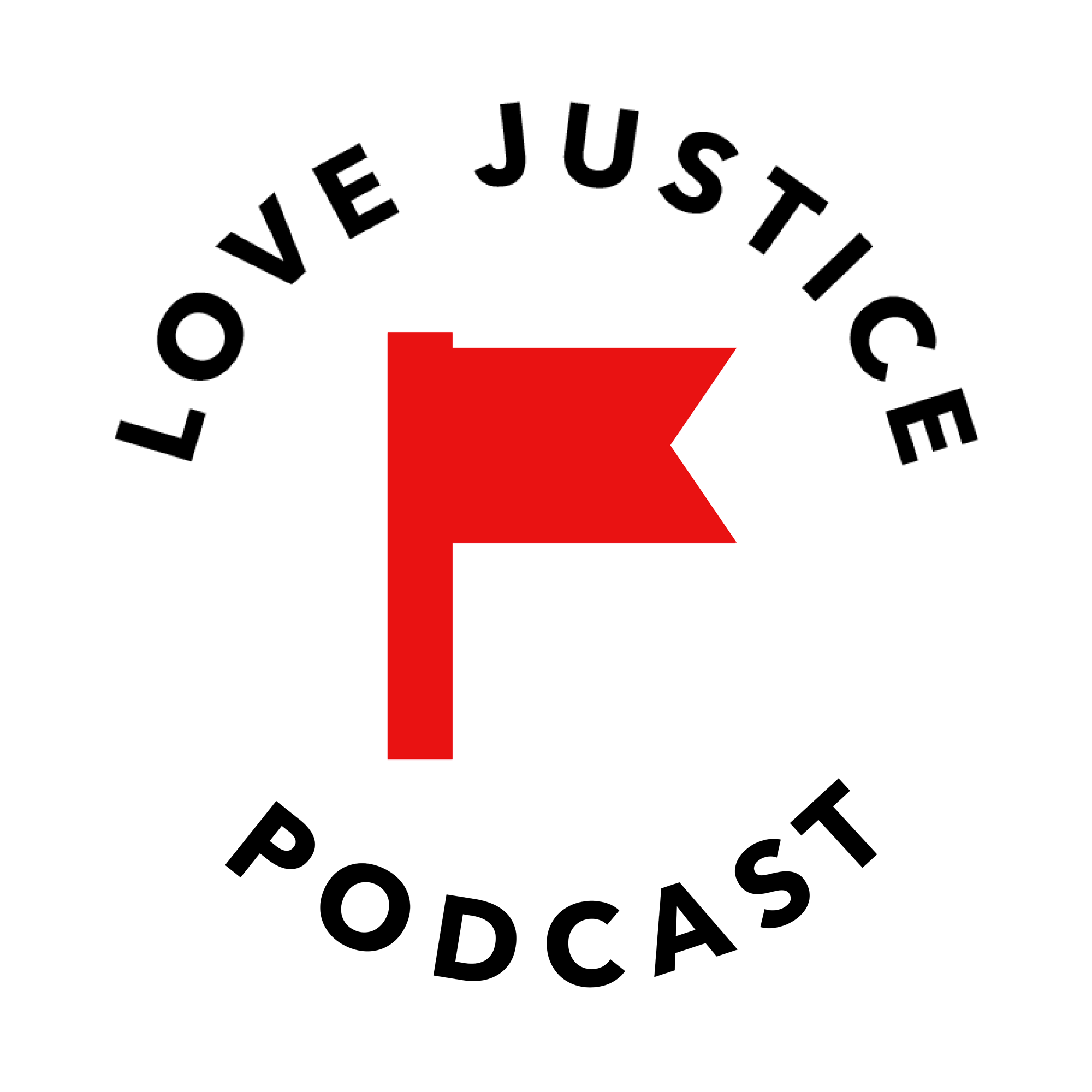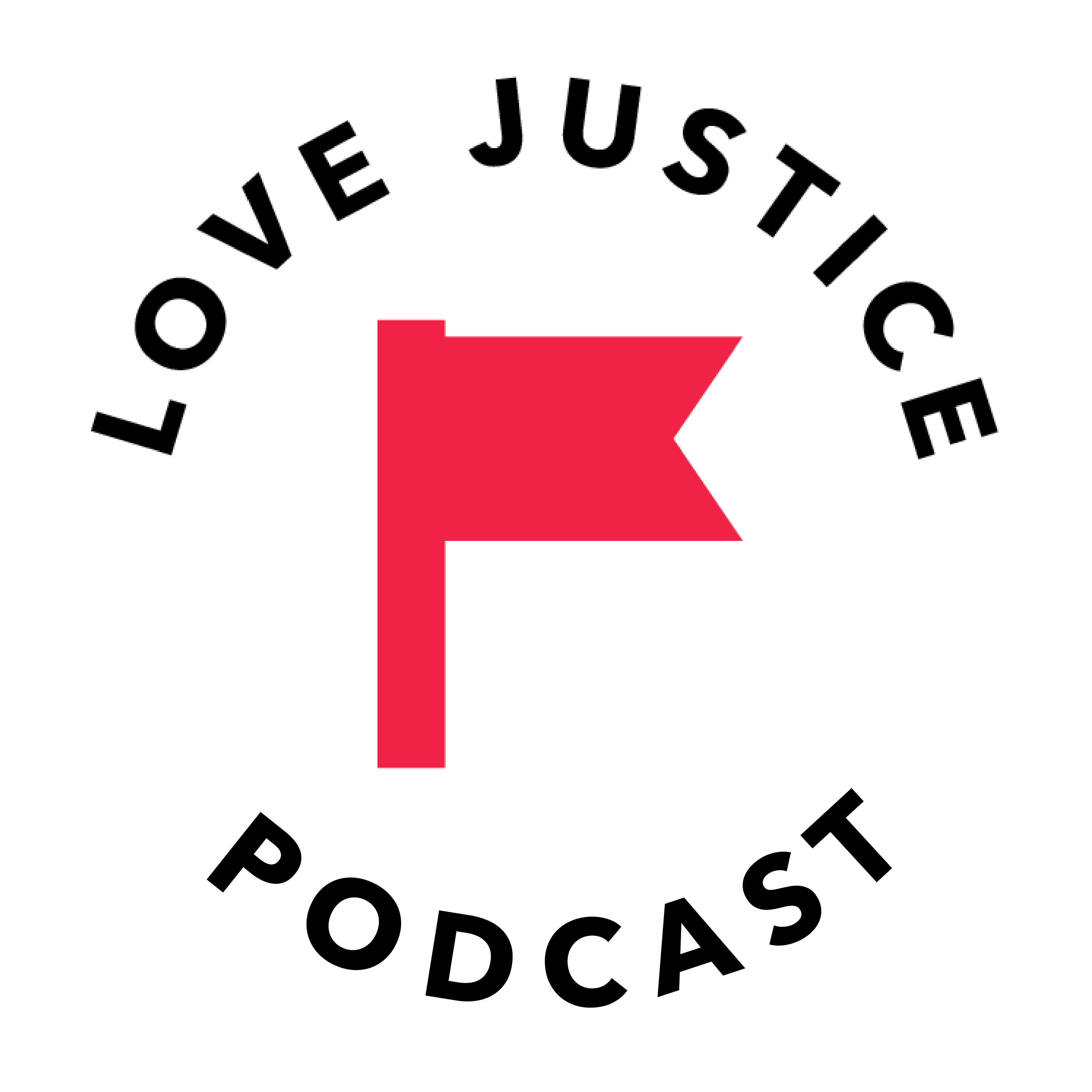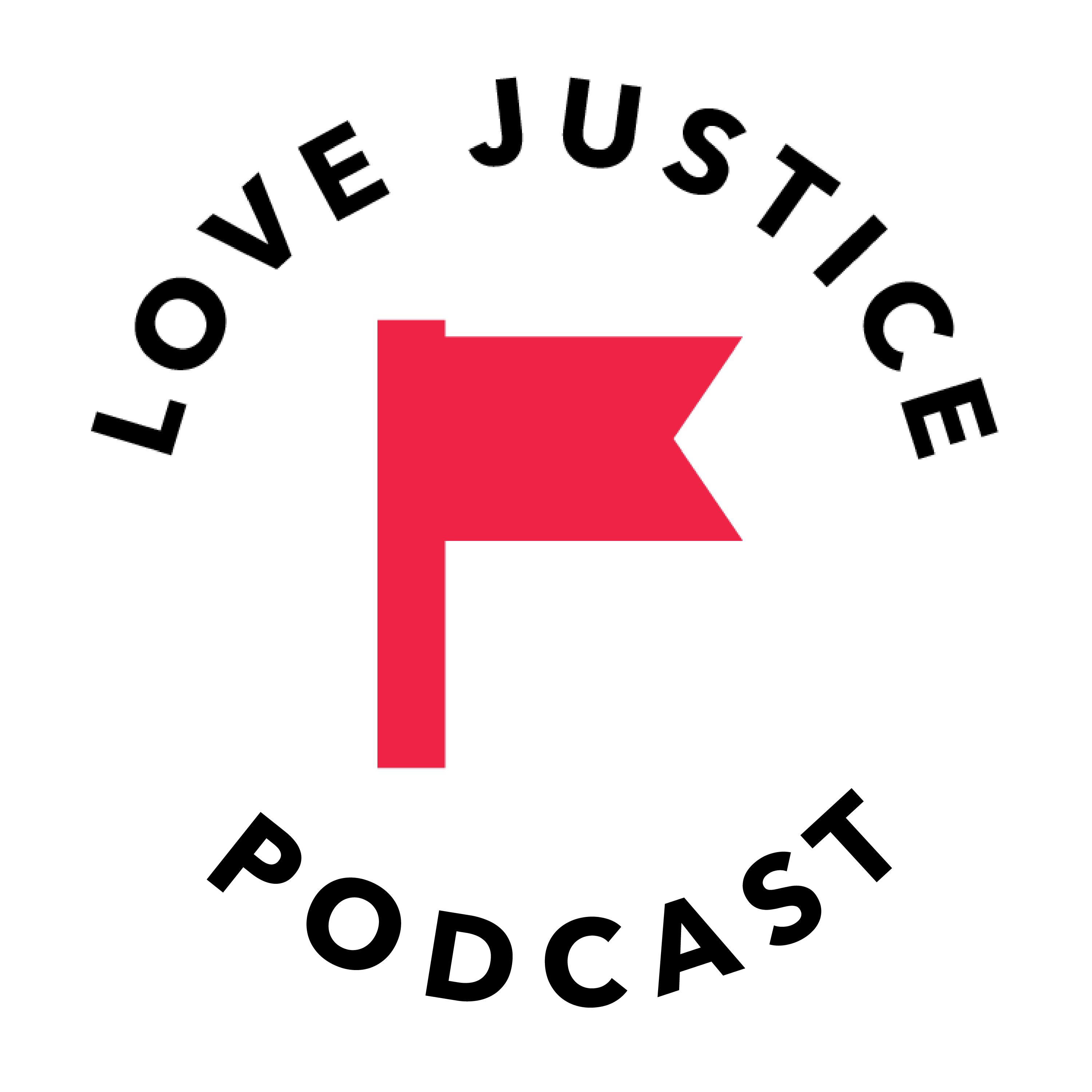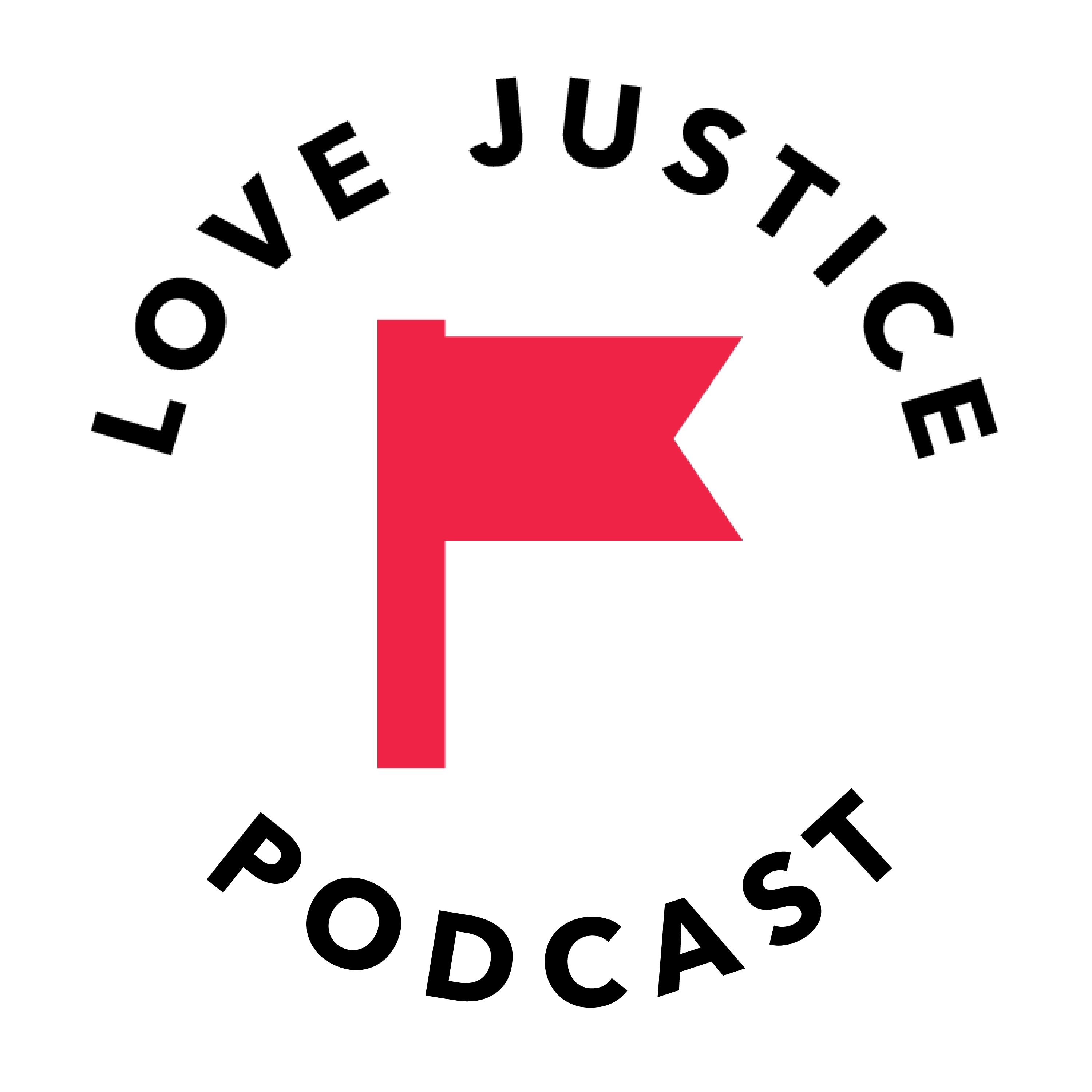Episode Transcript
[00:00:02] Speaker A: Welcome to the Love Justice Podcast where we hear from different voices who are joining us in the fight against modern day slavery. Here's your host, Hannah Munn.
[00:00:16] Speaker B: Hey, friends, welcome back to the Love Justice Podcast. I'm your host, Hannah Munn, and today I'm joined by John Molyneux, founder and CEO of Love Justice.
We are celebrating some exciting news that we could not wait to share with you. Our cost per intercept, the amount that it takes us to protect someone from trafficking, has dropped from $132 to $112.
That means your impact just got bigger. John, tell us what this number actually means and why should our donors care about it?
[00:00:49] Speaker A: Yeah, I mean, it means that your money does more, it has a greater impact.
And I mean, this number is a calculation of how much it costs us to intercept a person from being trafficked. There's a bit of nuance to the calculation, which is, has been independently reviewed and really looked into pretty thoroughly by our board. And one of the one factor is it uses a joint cost accounting method because transit monitoring results in both arrests and intercepts. And so we, we calculate this assuming that one arrest equals 15 intercepts. And we take basically the total intercepts divided by our expense, including proport, allocated fundraising and overhead. And that is the number that we're reporting. And ultimately, like this, is the number that really matters because it means the purpose for which our donors give, which is to impact lives, is happening at a greater rate. More lives are being impacted based on the donors of the giving of our donors. And so, you know, it's an understatement to say the impact matters. Not only does it matter, impact is everything in charity. It is the sole purpose of charitable work and giving.
And we have sort of built Love justice around an idea that's as overlooked as it is obvious that given a choice between doing more and doing less, we should always choose more. Which is to say we should strive to maximize the impact that we make with the resources we've been entrusted with. So we've been on this incredible run for more than 50 months in a row, going all the way back to 2020. Our 12 month rolling average cost per intercept has steadily decreased with only a few brief plateaus or one to three dollar upticks. And today that fully loaded cost, including fundraising over here is $112 per intercept. And that's just been a remarkable run of growing impact and efficiency of our work.
[00:02:54] Speaker B: Yeah, yeah, I think it's amazing to be able to say if someone were to give $112 right now, we can say that that could save someone's life, which I think the impact on the dollar and that total amount is amazing. And we'll kind of get into maybe some, like, a little bit of logistics later on. But now that we know what the cost per intercept means, let's talk about the why this didn't happen by accident. Behind the scenes, our teams have been working really hard to tighten systems, improve processes, and steward resources carefully with that cost per intercept in mind. Um, John, over the past few years, we've seen something remarkable where our cost per intercept has dropped for 32 months in a row. And you kind of talked about in the last five. This is the trajectory, but specifically in the last 32 months in a row, it dropped from $140 to $112 today.
What have we done to make that happen without cutting corners or compromising quality?
[00:03:58] Speaker A: Well, it's something that there's different things that have happened at all levels of the organization. Kind of from the top.
We have this value allocate by impact. We want to take our resources, we want to invest them in the places where that have the greatest impact, and we want to close down the places that are not having an impact. And so to do that internally, we use a calculation. It's called IBR impact budget ratio. It's similar to dollar per intercept, but it's just a little bit more complicated. Includes for arrests, it weights them based on conviction, percent and average year of sentence.
And it basically we retooled this impact budget ratio around our goal of $120 per intercept, so that if, if you hit 100% IBR, you were getting $120 per intercept.
And we would close stations that were not hitting that. We would invest in stations and countries with proven impact. And that was a big part. That was a big part of it. But it's not the only part. I mean, one significant aspect of this has been improving our culture.
The culture of the organization is ultimately a very crucial part of how effective we're able to be. And we've done so many different things to think about that, to steward that, to build the best culture that we can. We've been a part of this Better Christian Workplaces survey for several years.
And every year when we see those results, we make plans how we can get better. And this year, for the first time, we achieved a flourishing score on our Better Christian Workplaces survey. So that was really key.
You know, so our core competency, what we do relative to our partners, is searching out the people, places, and tools to maximize mission impact.
And we've really been rebuilding around that identity for several years. And one part of it is searching other people, places and tools. And those tools are our core processes and we want to make those core processes the best that we can. And so we've been continually improving those systems.
We've been sort of, we say engineering those core processes and our idea is that a lead and stakeholders will drive each core process towards becoming a kingdom class. And so we actually had 15 core processes that were specifically identified as greatest wins by the anti trafficking leadership team at our recent leadership team gathering.
And every one of them is a story in and of itself of how that's making us better. And then we have what we call compliance. And Hannah, that you have our area national complex. How many sub steps did we complete this year?
[00:06:50] Speaker B: A lot.
[00:06:53] Speaker A: We hit. Was it 1200?
[00:06:55] Speaker B: Over 1200, yeah, over 1200.
[00:06:58] Speaker A: And these are things that our team is doing to make sure, well, partially to install which is, which is to adapt and train on those core processes. And then we're also measuring compliance with those. And so Hannah and her team, they're doing those things just at a, at a really, a lot of those things at a really high level.
So on that side, on the installation and compliance side, the team is just, is just really has been working really hard and has been killing it. And then part of it is also like we're really learning from our fields what works and we're trying to figure out what is working in one place and get that strategy out to the other fields, you know, like learning from them and teaching the other fields, facilitating direct collaboration between the fields. Our regional stewards that, whose job is like coaching and approving budgets that you know, and, and kind of guiding our fields. They have been amazing. They've had a lot of difficult conversations sometimes about allocating my impact, about in some cases closing stations. But then they've also been coaching, guiding, encouraging impact to happen.
And then most of all, and the ultimate reason is because our monitors and project managers, they did it, they found ways to increase their impact without increasing their expenses.
So yeah, it's been a, it's been, I just say a top to bottom all throughout the organization pressing into being the best version of Love justice that we can be.
[00:08:29] Speaker B: John, what safeguards keep us focused on doing things the right way, not just the cheap way.
[00:08:36] Speaker A: Well, I mean really one of the biggest ones is our impact verification processes. Hannah, you've been a big part of that and we have really worked sort of institutionalize skepticism about our own impact.
Part of that is ensuring that each intercept is counted only after a rigorous verification process involving multiple staff members working independently. And then as you know, we've had multiple impact audits by external experts to really ensure that we can stand by what we're counting as impact.
And it's funny to say in this episode, but this year I think the downward trend in our dollar per intercept, it may reverse. It's not going to continue to forever. And we're as we're putting a greater and greater emphasis not just on quantity of intercepts, but on intercept quality.
[00:09:29] Speaker B: Yeah, yeah. John, what other claims like this about great impact on the dollar are out there that you're aware of? And how common is this kind of impact on the dollar? The $112 per intercept?
[00:09:44] Speaker A: It's well, I'll say and it's been surprising to me how rare those kind of claims are. They, it's almost true to say that they don't really exist. I, I have found, you know, we have, we're always trying to find these and, and listener, you may, may doubt what I'm saying. I encourage everyone look, look on the Internet, look on use AI to ask what are the most credible claims to impact on the dollar?
There's not a lot out there that really where organizations are saying for this number of dollars we can do exactly this. There are some, but they are rare. And there's this whole movement about maximizing impact on the dollar called effective altruism. I fully agree with the idea. It's basically just saying we should try to maximize the impact on the dollars that we have.
But I would also say I haven't seen anything particularly effective in terms of credible claims impact on the dollar coming out of that movement.
The most commonly cited claim about excellent impact on the dollar is from an article on GiveWell. I think it's up now. It's most likely if you ask AI what is the best claim, it will cite this and it's several organizations for whom it costs 4,500 to $5,000 to save one life through mosquito nets. And that's a great, that's an amazing impact on the dollar.
But compared to $112 to intercept a person to prevent them from being trafficked with an additional preventative effect beyond that. You know, it's.
We're at least in that, in that conversation for sure it seems to me. But, but I will say this. This month I was at a forum, there were some other CEOs from organizations there that I can honestly say had truly exemplary impact on the dollar. They didn't quite have it in it where they could really succinctly say exactly this impact is what we can have for this amount. But you know, they do things like economically transform someone's life, provide water, restore land that's been stolen from an orphan and widow.
But that, and I didn't get the exact numbers of what those things cost per se, but my clear sense was that they had a really great value. So some are out there, but I think it needs to be, it needs to be more of a, of a thing that organizations are kind of encouraged and pressured and even forced to say this is the impact we're able to have for this much money and to really try to maximize the impact that we have with the resources we've been entrusted with.
[00:12:14] Speaker B: Yeah. John, do you have a story or maybe a moment where a clear process or faster coordination made all the difference for someone at risk?
[00:12:24] Speaker A: Well, probably the most clear example was we changed, was when we changed our IBR calculation. You were there, you were part of that hann and it was a geeky mathematical calculation of a metric that we changed. And I would say that the changes that we made to our IBR and the way that we rolled that out resulted in thousands of intercepts.
And so that's just an estimate, it's an anecdote. But that's kind of a lot of what we do at Love Justice. We try to find those situations where, where we can make our processes better and that results in more impact. And ultimately like most of the impact that we have is because we're constantly doing that with all of our core processes and really leaning into that core competency, driving our core processes to become kingdom class. And that is what does ultimately result in the impact that we have.
[00:13:22] Speaker B: Yeah, yeah. And I think about the numbers that you're sharing of like thousands of intercepts and breaking it down to um, you know those changes and pivots that we made are allowing us to protect more five year old boys in Zambia. Like there's a case there that I will never forget or girls in Bangladesh and Nepal that are being trafficked for sexual exploitation. Like those are it. It's so hard to really drill that down into one single life of like that is the impact that we're having in one person's life. And we're, it's amazing and a testimony to be able to say because of the sharpening and because of the investment of our faithful generous donors, we're able to do more. Which brings us to where we're headed next as an organization. There are more lives at risk, more countries to work in, more borders to monitor. And we've been talking a lot about the ripple effect, how one gift, one prayer, one step of generosity can set off a chain reaction that changes lives.
John, how does a lower cost per intercept make every action a donor takes go further?
[00:14:33] Speaker A: Well, I mean, just to be very direct, like if you gave $10,000, that would intercept 76 people at $132 per intercept and 89 people at $112 per intercept. So that's the difference of 13 people.
And those people are as precious as those that we love most. If we can just imagine a single one of them, if we could see them, if we know their face, and if we could see their mom, if we could, if we could know their story, we would just be so compelled, you know. But remember that we believe that every person that we intercept also results in additional disruptive prevention. That the number of people being trafficked and enslaved declines because of not just by one, but by more than one because of what has happened to the prevalence of slavery in the countries we work it. Traffickers opt out when they see us poking around asking questions in all the key transit areas.
So we believe those additional 13 intercepts due to the efficiency, each result in several more cases of trafficking prevented.
[00:15:41] Speaker B: Yeah, and John, we've gone from our very first intercept in 2006, almost 20 years ago, to more than what will be a hundred thousand intercepts by the end of this year. We're like, we're right on the cusp of that. A hundred thousand intercepts made by our, by our teams and our partners. That's an, that's an incredible ripple already in motion and one that has been set in motion by everyone that has come alongside of us the last 20 years. Looking forward, if we can scale with anything close to our current efficiency, what could that mean in the years to come, particularly around the prevalence of slavery in the world today?
[00:16:28] Speaker A: Well, one thing I'll say is that that efficiency will reverse at some point as we pick all the low hanging fruit and scale.
It's just not really sustainable to be, to forever get more and more efficient. But I think we still have some Runway, I think we still have a lot of improvements that can be made. But as you know, Hannah, like what we really want to do is accelerate the real impact reducing slavery rather than just intercepting more and more individuals. And so this year at our, our anti trafficking strategic gathering, we really made an intentional choice to folk to shift our focus to intercept quality. You know, to make sure that not just that, that we're intercepting more and more people, but each intercept is more and more the right kind of intercept. An effective intercept that's very likely to be trafficking, that involves that, you know, where there's the strongest evidence of trafficking. And so we're going to allocate by impact around intercept quality this year. And I think that's going to greatly increase the quality of our overall intercepts, which is going to mean more reduction in slavery.
And so one of our one year goals this year is to develop a theory of disruptive coverage that models the reduction of slavery that we've seen in the countries that we work in and the countries that our intercepts are destined for. So whether we build intercept quality into that theory or we use those two tools together, the theory of disruptive coverage, the intercept quality metric, those will help us invest resources where they would have the greatest impact in reducing slavery.
I never would have said this five or 10 years ago. Hannah, you were at the Strategic Operation Committee gathering about seven years ago where we asked the question what would it take to cut human trafficking in half in 10 years? Where we decided jointly that essentially the conclusion was definitively we can't because it's such a massive problem. We wanted, to be honest, we didn't want to just put out this ridiculous audacious goal or claim that we didn't have a way to meet.
But if we scale transit monitoring, I believe now, and we can drive the downfall of slavery where it's most rampant in our lifetime. And I believe that and, and I believe we're on that path.
[00:18:59] Speaker B: Yeah. And I, I, it's, it's neat that you bring up that gathering because we left that a little bit flat feeling like, you know, we crunch the numbers, how many intercepts per month would it take? And it was like overwhel.
And that's why I think this drop from $132 to $112 cost per intercept, it's not just a metric for us, it's a milestone of faithfulness and a milestone of perseverance. And it means we're living out our core value of doing much with little.
And it means that our donors impact again, it just got bigger. So John, would you just take a moment to speak directly to our listeners?
What do you want them to hear as we celebrate this news together? And what invitation would you like to extend to them?
[00:19:52] Speaker A: Well, I mean, I would just say, particularly speaking to our donors, that like our donors are responsible for this impact.
They are the reason for it. They are the cause of it. And the moral credit that is due it goes to them. Because they, as donors, they sacrificed to make this possible. They didn't have to and they chose to. And because they did, countless people whose faces that they'll never see, whose stories they'll never know, whose hands they will likely will never touch, at least on this side of eternity averted the life defining nightmare of being trafficked. So I don't really have words to convey what that means, but I just, I, other than I just want to say to them, on behalf of all of us at Love justice, thank you and well done.
[00:20:43] Speaker B: Yeah, John, thank you so much for encouraging the Love justice community and the family that has made this work possible. And yeah, we look forward to the impact that we're going to be able to have together in the years to come.
[00:21:00] Speaker A: Yeah, thank you, Hannah.
We are grateful for the generous support of the Love justice community. Please consider joining our family of donors. Learn more at lovejustice ngo.




